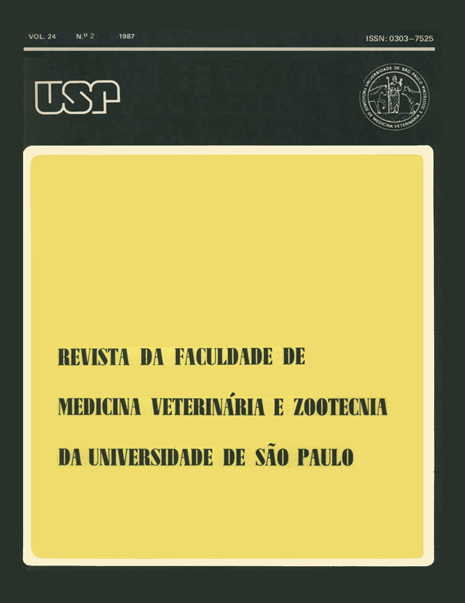Demonstration of rabies antigens in the submaxillary and parotid salivary glands of naturally infected dogs. Use of the fluorescent antibody (FA) technique on smears of semi-ground salivary gland tissue
DOI:
https://doi.org/10.11606/issn.2318-3659.v24i2p181-186Keywords:
rabies, dogs, diagnosis, salivary glandsAbstract
Submaxillary and parotid glands of 30 naturally rabies infected dogs were examined using the direct fluorescent antibody (FA) technique on tissue smears of semi-ground salivary glands. Mouse inoculation (MI) tests of all examined salivary glands were run in parallel and the rabies diagnosis was confirmed by means of FA and MI tests of materials taken from the Ammon's horn. Specimens taken from the submaxilar glands and Ammon's horn were 100.0% positive for FA and MI tests, however, for the specimens taken from the parotid glands it was found one negative result with both FA and MI test and 11 discrepancies: five FA negative – MI positive results and six FA positive – MI negative results. The results found in this experiment demonstrated the practicality of the FA test using smears of semi-ground salivary glands. This technique should become an alternative tool for the study of rabies pathogenesis, especially for the search of the rabies virus associated with the organs involved in the virus transmission.


